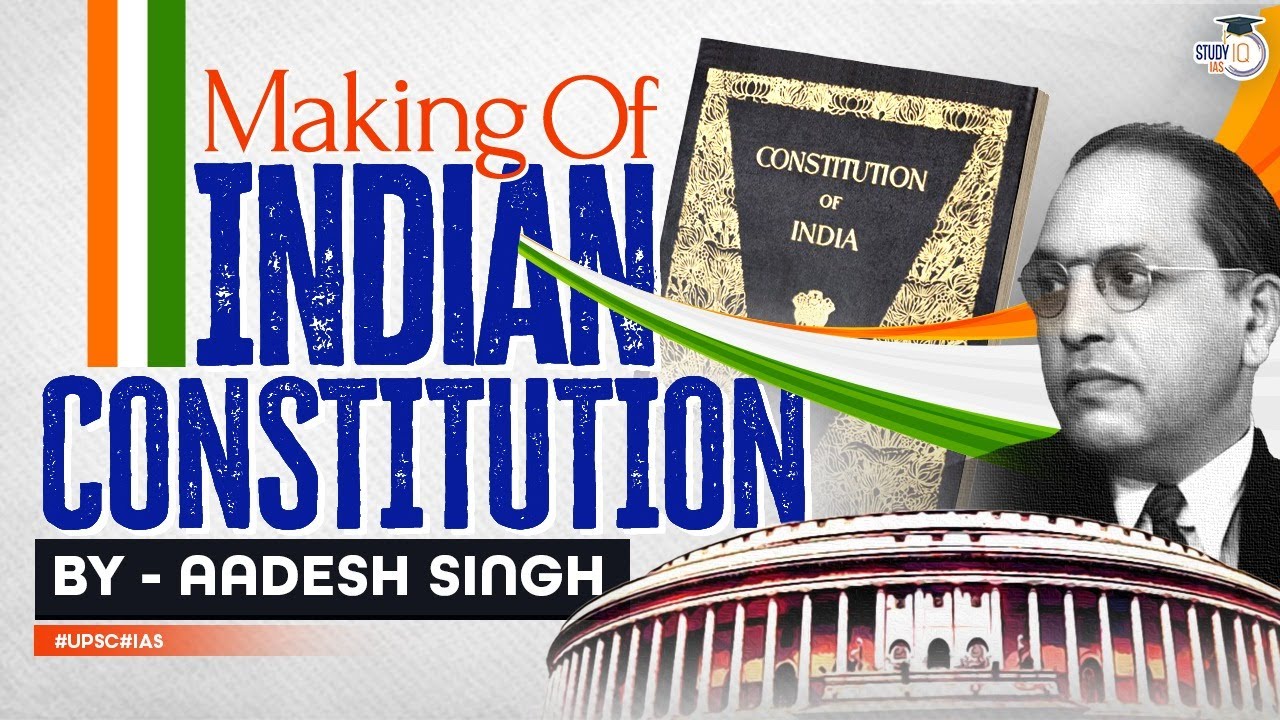The Constitution of India - An Introduction
Summary
TLDRThe Constitution of India, adopted on November 26, 1949, and effective January 26, 1950, is the world's longest written constitution. It embodies the principles of justice, liberty, and equality, establishing India as a sovereign, socialist, secular, and democratic republic. The document ensures universal adult franchise and protects fundamental rights while outlining directive principles to guide governance. Though some principles are non-enforceable, they aim to foster a just social order. As a living document, the Constitution has been amended to meet evolving challenges, emphasizing the responsibility of citizens to understand and uphold its sanctity.
Takeaways
- 📜 The Constitution of India is the longest written constitution in the world.
- 🗓️ It was adopted on November 26, 1949, and came into effect on January 26, 1950.
- 👥 The preamble starts with 'We the people of India,' highlighting the democratic spirit.
- 🇮🇳 India is established as a sovereign, socialist, secular, democratic republic.
- ⚖️ The Constitution guarantees justice, liberty, equality, and fraternity for all citizens.
- 🗳️ Universal adult franchise ensures that all adult citizens have the right to vote without discrimination.
- 📊 The legislature represents the will of the people, while the judiciary serves as the conscience of the nation.
- 📜 Fundamental rights are legally enforceable and essential for a dignified existence.
- 🛡️ Directive principles of state policy guide the governance but are not enforceable in courts.
- 📝 The Constitution is a living document that has undergone multiple amendments to meet evolving needs.
Q & A
What is the significance of the Constitution of India?
-The Constitution of India is the supreme law of the land and the longest written constitution in the world, establishing the framework for the country’s governance and legal system.
When was the Constitution of India adopted and when did it come into effect?
-The Constitution was adopted on 26th November 1949 and came into effect on 26th January 1950.
What does the Preamble of the Constitution signify?
-The Preamble, starting with 'We the people of India,' reflects the spirit of the Constitution, emphasizing sovereignty, socialism, secularism, democracy, and the unity and integrity of the nation.
What are the basic principles recognized by the Indian Constitution?
-The Constitution recognizes justice, liberty, equality, and fraternity as basic principles that guide the lives of citizens.
What rights do citizens have under the Constitution?
-All adult citizens have the right to vote without discrimination, ensuring universal adult franchise, which is a hallmark of a democratic system.
What roles do the legislature and judiciary play according to the Constitution?
-The legislature represents the will of the people and enacts laws, while the independent judiciary serves as the conscience of the nation, ensuring justice.
What are Fundamental Rights and Directive Principles of State Policy?
-Fundamental Rights are legally enforceable rights that protect individuals from arbitrary state actions, whereas Directive Principles are guidelines for the governance of the nation aimed at establishing a just social order.
Are Directive Principles enforceable in courts of law?
-No, Directive Principles are not enforceable in courts but are fundamental in guiding the state's governance.
What are the Fundamental Duties of citizens as mentioned in the Constitution?
-Fundamental Duties are non-enforceable obligations of citizens, which contribute to building a better society and uphold the Constitution's values.
How has the Constitution of India evolved over the years?
-The Constitution is a living document that has undergone multiple amendments to address emerging needs and challenges, reflecting the dynamic nature of Indian society.
Outlines

Dieser Bereich ist nur für Premium-Benutzer verfügbar. Bitte führen Sie ein Upgrade durch, um auf diesen Abschnitt zuzugreifen.
Upgrade durchführenMindmap

Dieser Bereich ist nur für Premium-Benutzer verfügbar. Bitte führen Sie ein Upgrade durch, um auf diesen Abschnitt zuzugreifen.
Upgrade durchführenKeywords

Dieser Bereich ist nur für Premium-Benutzer verfügbar. Bitte führen Sie ein Upgrade durch, um auf diesen Abschnitt zuzugreifen.
Upgrade durchführenHighlights

Dieser Bereich ist nur für Premium-Benutzer verfügbar. Bitte führen Sie ein Upgrade durch, um auf diesen Abschnitt zuzugreifen.
Upgrade durchführenTranscripts

Dieser Bereich ist nur für Premium-Benutzer verfügbar. Bitte führen Sie ein Upgrade durch, um auf diesen Abschnitt zuzugreifen.
Upgrade durchführenWeitere ähnliche Videos ansehen

Samvidhaan | Making of the Indian Constitution | GS History by Aadesh

Tips and Tricks to remember Indian Constitution

Preamble to the Constitution of India

The Making of India's Constitution

Making of the Indian Constitution | Republic Day | Polity | UPSC GS

POLITY FOR SSC | MAKING OF CONSTITUTION | PARMAR SSC
5.0 / 5 (0 votes)
